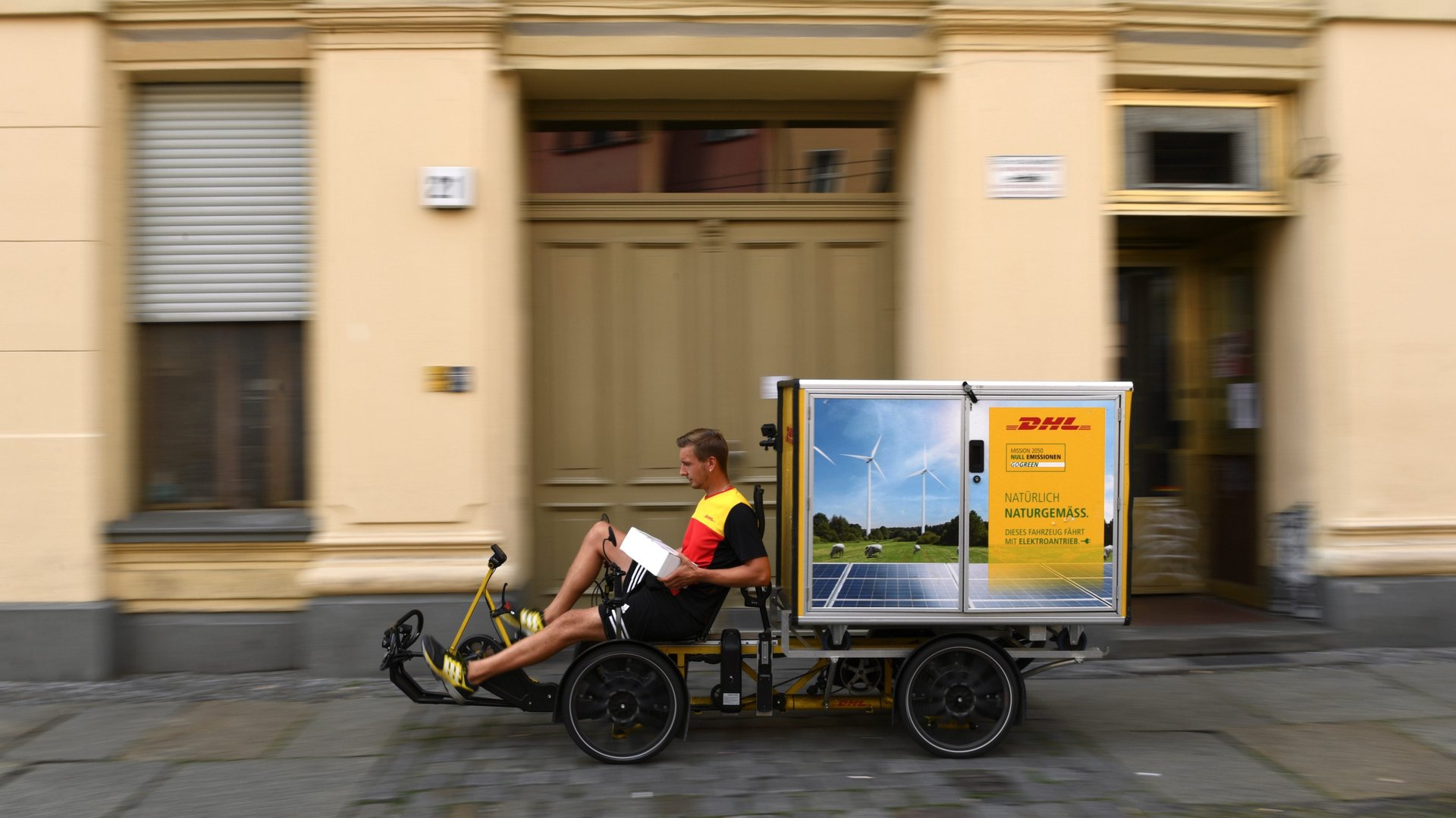Electric cargo bikes will deliver your next package—if US cities embrace them
When it comes to delivering packages in crowded cities, you can’t beat an e-bike.


When it comes to delivering packages in crowded cities, you can’t beat an e-bike.
These vehicles, usually an extended-frame bike with room for cargo in the front, can move nimbly move through city streets using bike and bus lanes, take shortcuts, and park close to their destinations with loads up to 300 kg (661 lbs). While lacking the payload of a larger vehicle, they can haul consumer packages, food orders, and even people.
A new University of Westminster study of electric cargo bikes in London found that they made deliveries 60% faster than traditional vans, and with 90% less emissions compared to diesel-powered vans. In this study, researchers tracked GPS data on a fleet of 55 electric cargo bikes operated by Pedal Me, a freight service operating in London. When compared to van deliveries under the same conditions, the bikes delivered more packages at faster speeds than vans. Importantly, they produced 90% less CO2 than diesel-powered vans, and 33% less than electric-powered vans. While cargo e-bikes can’t handle every delivery, the study found that replacing just 10% of the delivery miles currently covered by vans would save 133,300 tons of CO2 per year. That’s crucial for London to achieve its work to meet its goal of achieving carbon neutrality by 2030.
While this form of last-mile transit has been popular in Europe, adoption has been far slower in US cities where fewer companies have added cargo bikes to their city delivery fleets. Models in European countries demonstrate “carrot” incentives governments can use to get companies to adopt cargo bikes on a large scale. In the US, it may require more of a “stick” approach.
Cargo bikes cruise into the delivery craze
The use of delivery services and e-commerce exploded during the coronavirus pandemic. That has meant more delivery vehicles clogging city streets, obstructing traffic, and contributing to air pollution. It’s exacerbated a problem that has been getting worse for years as more shopping moves online.
In recent years, European Union countries have taken steps to get more cargo bikes on the road in lieu of motorized vehicles. These have included national and local tax incentives to get businesses and individuals to purchase them, as well as designing roads with bike lanes wide enough to accommodate these bikes, and lifting cargo weight restrictions, which the UK did in 2015.
A robust network of cargo bikes has thrived in Germany with support from government regulation; extensive bike lanes on the streets of Berlin, Hamburg, and other major cities benefit personal cyclists and couriers alike. Between 2019 and 2020, sales grew by 60% across the continent with the greatest growth in electric cargo bikes. The national environment ministry recently started a program to fund the purchase of electric cargo bikes as well as the construction of “micro depots” to temporarily store and stage packages for delivery. In German cities especially, cargo e-bikes have been integrated into professional logistics networks. Deutsche Post DHL, the nation’s largest courier service, has 17,000 e-bicycles and e-tricycles in its fleet, and is looking to acquire even more by 2025.
Rolling out cargo bikes in US cities
It’s different in US cities, where gasoline-powered vans and trucks dominate. Despite the benefits that cargo e-bikes offer, logistics companies like UPS and FedEx aren’t likely to adopt them without cities forcing their hand, argues David Zipper at the Harvard Kennedy School’s Taubman Center for State and Local Government. “What you really need is a regulatory shove from cities,” says Zipper, in addition to infrastructure like bike lanes and secure parking.
Zipper suggests that cities could exercise their regulatory power to increase fines for illegally parking delivery vans enough to impact the companies’ bottom lines. At the moment, economics still favor the status quo. In 2018, four delivery companies including FedEx and UPS racked up $27 million in parking tickets in New York City alone, but show no signs of slowing.
Things are starting to change. New York launched a six-month cargo bike pilot program in late 2019 that saw early success in reducing emissions and traffic while still effectively getting packages delivered. The city’s Department of Transportation is now considering making the program permanent. Much more popular among US shipping companies, however, has been the adoption of electric delivery vehicles. This gets at the emissions problem, Zipper says, but is still a solution that prioritizes vehicles over people.
“We should find the least carbon-intensive way—and the most society friendly way—of delivering a given package based on where it’s picked up and where it’s going.”